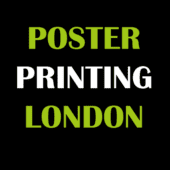Crafting the Perfect Poster: A Guide to Effective Design
In today’s visually saturated world, creating a poster that captures attention and communicates your message effectively is more important than ever. Whether you’re promoting an event, advertising a product, or sharing information, a well-designed poster can be a powerful tool for grabbing the viewer’s attention and conveying your intended message. In this article, we’ll explore the key elements that make a good poster and provide tips for designing one that stands out from the crowd.
1. Clear Communication
At its core, a good poster communicates its message clearly and concisely. Before diving into the design process, it’s essential to define the purpose of your poster and identify the key information you want to convey. Whether it’s an event date, a product feature, or a call to action, prioritize clarity in your messaging to ensure that viewers understand the purpose of your poster at a glance.
2. Eye-Catching Visuals
Visual elements play a crucial role in grabbing the viewer’s attention and creating a memorable impression. Incorporate high-quality images, graphics, and colors that complement your message and help convey the mood or tone you want to evoke. Use bold typography and striking visuals to draw the viewer’s eye to the most important information and create visual hierarchy within your poster.
3. Simplicity and Readability
While it may be tempting to cram as much information as possible onto your poster, simplicity is key to effective design. Avoid cluttered layouts and excessive text, as they can overwhelm the viewer and make it difficult to absorb the information. Instead, focus on presenting your message in a clear and concise manner, using short sentences, bullet points, and visual cues to enhance readability.
4. Consistent Branding
If you’re creating a poster for a brand or organization, it’s important to maintain consistency with your existing branding elements. Use your brand’s colors, fonts, and imagery to create a cohesive visual identity that reinforces brand recognition and strengthens your message. Incorporate your logo and other brand assets prominently but tastefully to ensure that viewers associate the poster with your brand.
5. Call to Action
Every good poster should include a clear call to action that prompts the viewer to take the next step. Whether it’s purchasing a ticket, visiting a website, or contacting a phone number, make sure your call to action is prominent and easily accessible. Use persuasive language and compelling visuals to encourage viewers to engage with your message and follow through on your desired action.
6. Consider the Audience and Context
When designing your poster, take into account the audience and context in which it will be displayed. Consider factors such as demographics, interests, and location to tailor your design and messaging to resonate with your target audience. Whether you’re creating a poster for a music festival, a corporate event, or a community fundraiser, understanding your audience’s preferences and expectations will help you create a poster that resonates with them on a deeper level.
7. Test and Iterate
Finally, don’t be afraid to test different design elements and gather feedback from others before finalizing your poster. Conducting usability tests or showing your poster to friends, colleagues, or target audience members can provide valuable insights and help you identify areas for improvement. Be open to feedback and willing to make revisions as needed to ensure that your poster effectively communicates your message and achieves your desired objectives.
Conclusion
In the world of design, creating a good poster is about more than just aesthetics – it’s about effectively communicating your message and engaging your audience in a meaningful way. By prioritizing clarity, incorporating eye-catching visuals, maintaining consistency with branding, and crafting a compelling call to action, you can create a poster that captures attention, inspires action, and leaves a lasting impression on viewers. So, whether you’re promoting an event, launching a new product, or sharing important information, use these tips to design a poster that stands out and makes an impact.
